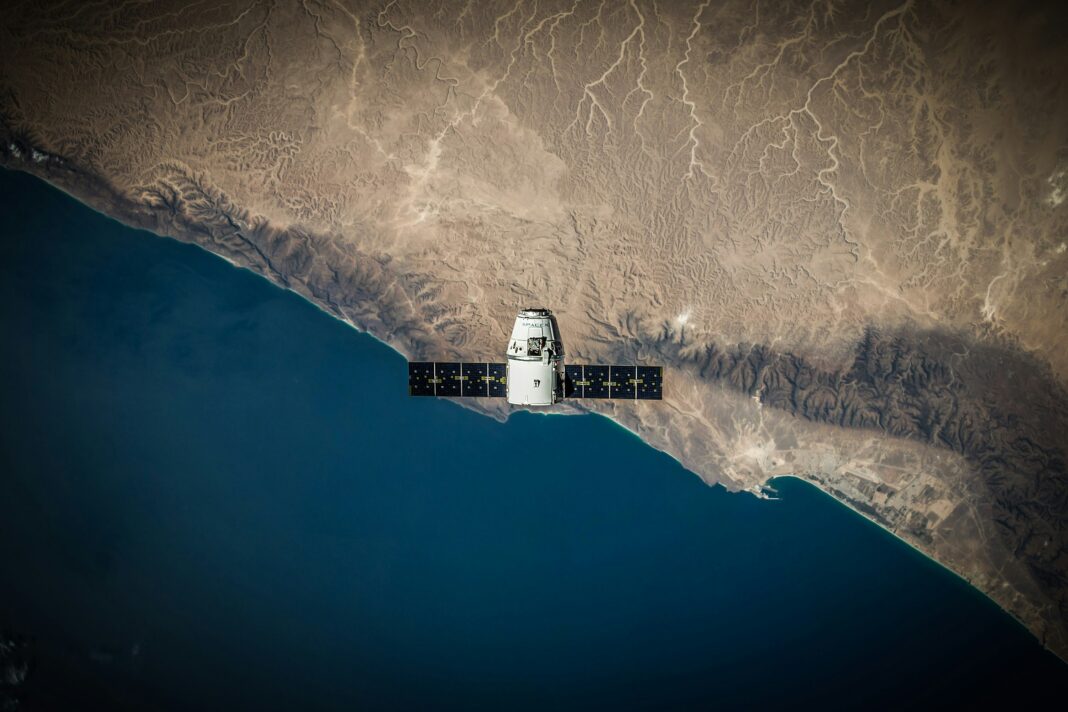The internet is a requirement rather than a luxury these days. Millions of people all across, especially in rural and isolated areas, need a consistent internet connection. Now enter SpaceX Starlink, a brand-new satellite internet service meant to offer high-speed connectivity everywhere. Driven by advanced technology and started by Elon Musk, Starlink seeks to close the digital divide. This blog will examine Starlink’s operations, benefits, challenges, and prospects for the future.
The Technology Behind Starlink
Right at the core of SpaceX Starlink sits one of the most advanced satellite constellations the Earth has ever seen. Unlike conventional internet design dependent on geostationary satellites or underwater cables, Starlink’s approach is revolutionary.
Satellite Constellations and Low Earth Orbit (LEO)
Launched by SpaceX Starlink, low Earth orbit (LEO) satellites lie between 340 and 1,200 km above the planet. Unlike conventional geostationary satellites, which orbit at around 36,000km, these LEO satellites substantially reduce latency, making them ideal for real-time operations as gaming or video conferences.
Thousands of tiny satellites are placed in a coordinated network using the constellation strategy (as of 2023, there were over 4,800 satellites, with the Federal Communications Commission approving the launch of even more). This guarantees flawless coverage everywhere, from crowded cities to isolated regions of the planet.
Ground Technology
Starlink users connect to the satellite network via phased array antennas. These sleek, pizza box–shaped devices allow users to switch seamlessly between satellites overhead, ensuring uninterrupted internet service. AI algorithms power the system to optimize data routing for faster speeds and low latency.
Starlink rivals metropolitan broadband speeds by achieving download rates of up to 250 Mbps in many locations with this mix of powerful satellites and smart ground infrastructure.
Benefits of Starlink
The main selling feature of Starlink is access. Delivering strong internet connectivity worldwide is already transforming lives in places where conventional solutions either don’t exist or remain unaffordable.
Accessibility for Rural and Remote Areas
Rural towns and isolated regions, once held back by slow or no internet access, now have new hope thanks to advancements in satellite technology. These breakthroughs are unlocking opportunities for education, healthcare, and economic growth.
It provides access to internet resources and e-learning possibilities for students living in far-off places. Small businesses can now run successfully and attract clients well beyond their physical sites. It is about economic empowerment as much as ease.
Connectivity During Emergencies
For situations involving tragedy and aid, Starlink has also proved quite helpful. Unlike conventional infrastructure vulnerable to natural events like hurricanes or earthquakes, the Starlink network stays whole. Deployed in Ukraine during war, Starlink stations served as vital communication lifelines following natural events such as Hurricane Ian in Florida.
Competitive Edge for Businesses
Lower latency and fast internet enable companies in underprivileged areas to now compete on a level playing field. Now, all within easy reach are video calls, cloud services, and digital tool access, which help rural innovation like never before.
Innovative Subscriber Perks
Beyond dependable connectivity, Starlink also provides plans for maritime and aircraft broadband, suitable for digital nomads, and “RV Mode,” for internet on the go, which suits both adventure and business-minded travellers.
Challenges and Criticisms
Starlink is a game-changer, but its inventiveness has not been without controversy. One should take the wait for the development of a technology into account, which is ready to change the world’s connectedness.
Environmental Concerns
SpaceX has proactively addressed concerns from astronomers and environmentalists by developing low-reflectivity satellites, reducing their impact on the night sky. Ongoing improvements continue to minimize disruptions to scientific research while expanding internet access. The clear reflections of the satellites have caused worries about disturbing scientific studies and contaminating the night sky. SpaceX answered by creating “darker” satellites, yet the issue still exists.
Cost Barriers
Although Starlink is great for rural locations, one complaint is about its price. For many low-income homes, it could stay unreachable with an initial equipment cost of $599 plus a monthly membership of $110.
Space Debris and Congestion
Approval for even more and thousands of satellites in orbit mean that concerns about space trash and collisions are growing. Growing congestion in LEO raises questions for NASA and other space organizations regarding not only satellite management but also future space exploration projects could be complicated by it.
Regulation and Market Competition
As local ISPs and governments fight back on what they consider to be a possible monopoly, Starlink encounters legal difficulties all around. From regulatory delays to competitive restrictions in some nations, SpaceX is negotiating political and financial constraints to growth.
The Future of Starlink
With SpaceX aggressively pushing ahead innovations and development ambitions, Starlink’s future seems bright despite its difficulties.
Expanding Coverage and Capacity
Tens of thousands of satellites are expected to be launched by SpaceX in the next years, thereby augmenting coverage, speed, and capacity all around. Next-generation satellites are already under development, hence expect significantly reduced latencies and better speeds.
Internet for Developing Nations
In developing countries, where conventional infrastructure lags decades behind, Starlink could transform internet access. SpaceX might enable millions of people to be online by providing reasonably priced plans or government alliances.
Integrating 5G and IoT
Starlink, a leader in satellite internet, is projected to interface with 5G networks and enable potent Internet of Things (IoT) applications since it is positioned as such. From linked infrastructure to smart farming in rural communities, the opportunities are almost unlimited.
Long-Term Affordability
SpaceX is working hard to make Starlink reasonably priced. Wider consumer base and economies of scale could help to lower future hardware and subscription costs.
Though Starlink is suggesting it may be more realistic than we formerly believed, the ambition of providing worldwide internet connectivity is audacious. Complementing Elon Musk’s other endeavors, like SpaceX’s Starship project, it is abundantly evident that the business is headed toward a more linked and interconnected future.
Starlink Connects the World, One Satellite at a Time
SpaceX’s Starlink satellite broadband is altering lives as much as the connectivity scene. High-speed, dependable internet in rural and underdeveloped areas helps to close gaps in business, education, and communication.
While challenges remain, Starlink is paving the way for innovation in space and on Earth. Whether you’re a tech enthusiast, a rural community member, or someone fascinated by satellite launches, the future of internet connectivity is evolving right before our eyes.
Are you ready to experience this cutting-edge technology? Explore and learn more about internet connectivity at the forefront of innovation today.

